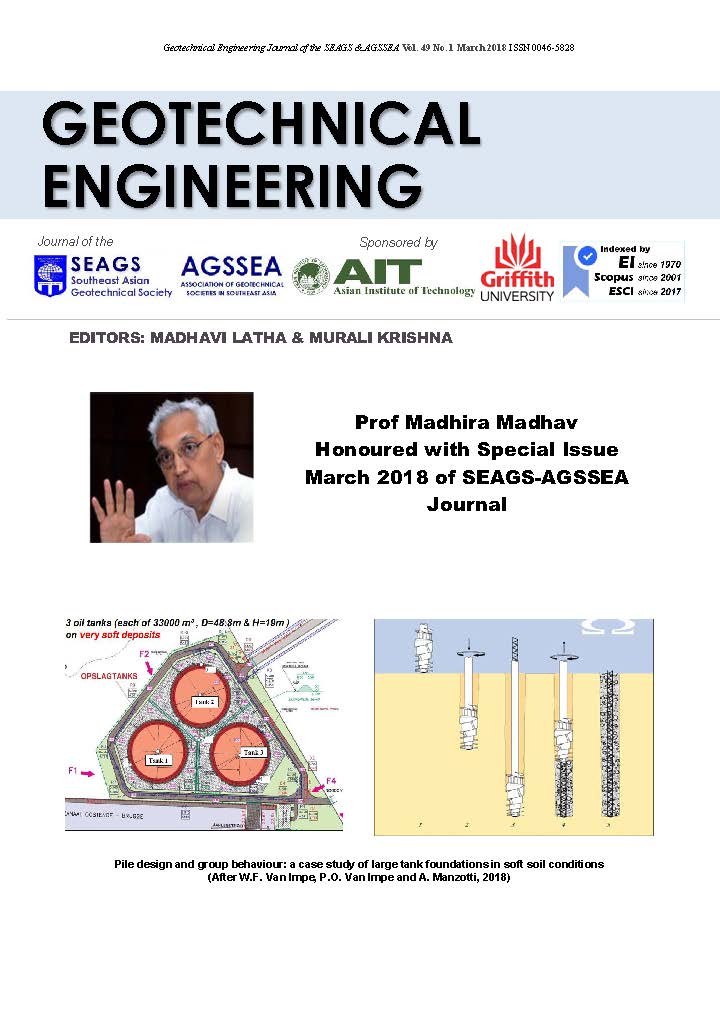Pile Design and Group Behaviour; a Case Study of Large Tank Foundations in Soft Soil Conditions
Main Article Content
Abstract
The paper presents the case study on the construction of three 48m diameter oil tanks in Ostend (Belgium), each founded on a group of 422 displacement cast in-situ screw piles. The three tanks are close enough to each other to induce interaction. Monitoring of the tanks’ movements has been performed during the hydro-testing of the steel tanks and during the subsequent working stage of the tanks. The bearing layer of the pile group is a 5m thick stiff sand layer at a depth of about 20m, overlain by a very heterogeneous soft clayey/silty fill containing sand pockets, and underlain by a very thick slightly over-consolidated clay. Some short and long term settlement prediction of the tanks have been done, assuming soil parameters derived from the CPT data on site, and compared to the measured settlements. The initially derived soil parameters are then re-evaluated in order to predict the long term settlement for the full life span of the construction.
Article Details

This work is licensed under a Creative Commons Attribution-NonCommercial-NoDerivatives 4.0 International License.
Copyright © 2019 Association of Geotechnical Societies in Southeast Asia (AGSSEA) - Southeast Asian Geotechnical Society (SEAGS).


